See Max, see Max run … in his underwear
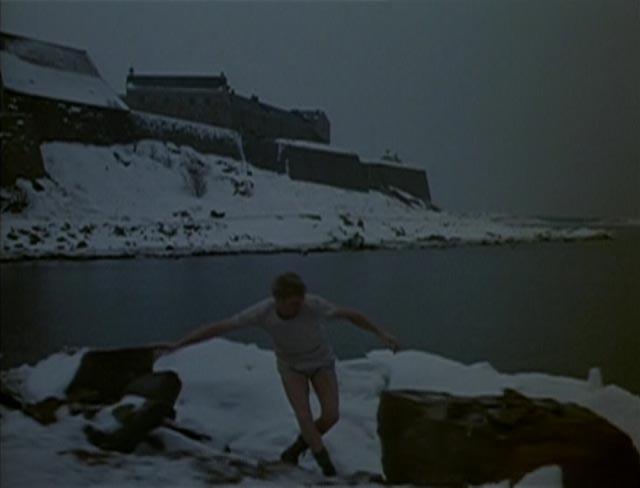
Sometimes you come across a movie about which everything seems inexplicable. How did it get made? Why did it get made? What was everyone thinking when they made it?
Take this for example: a lengthy opening sequence set in a bleak northern landscape by the sea. Gray light, snow and ice, in the background a massive stone fortress. In the foreground, a tall man dressed only in underwear and boots climbs the rocks towards the camera, then proceeds to run through snowy fields and woods until he eventually reaches a remote farmhouse, climbs on the roof and sneaks in through a damaged window which he obviously knows because there’s a trick to getting it open.
Once inside, he eavesdrops on the three people below, a married couple and the wife’s sister. They’re arguing about an obviously long-standing conflict over selling the family farm, dropping cryptic hints about a brother named Salem and something bad which happened several years earlier. Upstairs, the mysterious man proceeds to ransack a doctor’s bag, taking ampoules and a syringe and stuffing a bunch of ties into it before slipping back out through the window.
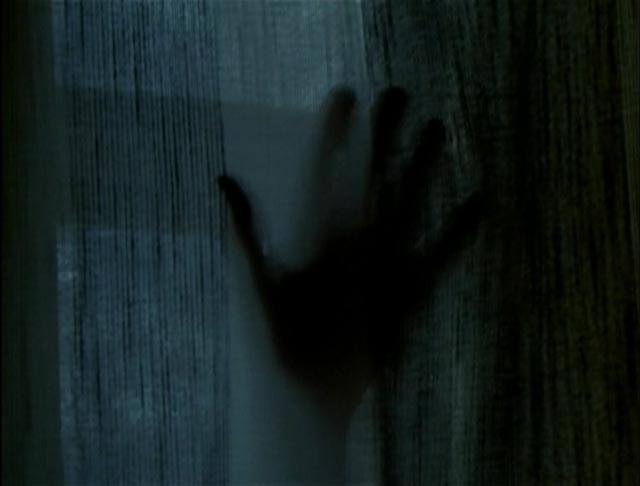
More underwear-clad running through the snow to another remote house where he sneaks into a young woman’s room. Here, recognized by the frightened woman, he is identified as the very same Salem; he stares at her with piercing eyes which seem to express a mix of lust and anger. The woman later turns up dead, strangled in her bed.
The looming fortress by the sea happens to be a massive insane asylum; Salem is an inmate, sent there after being convicted of a brutal axe-murder on the farm, a murder for which he was framed by his sister and brother-in-law because he stood in the way of selling the farm. If he wasn’t mad when he was put inside, he has become mad since, driven by a sense of righteous revenge which has enabled him to find a way to escape from and return to his cell, giving him the perfect alibi as he sets about killing all those who were responsible for putting him there – strangling, poisoning and finally hacking to pieces with an axe – devising it all carefully to implicate his venal brother-in-law.
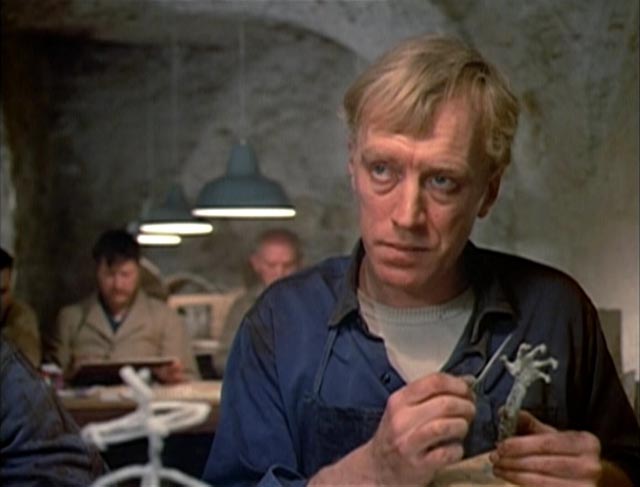
This is a brooding, moody movie which by sheer force of will holds at bay your sense that it’s all ridiculously implausible … and yet you can’t help feeling a puzzled sense of disbelief because the pseudo-Gothic shenanigans are played by a cast of international stars of real stature. It’s like coming across a version of Friday the 13th starring Laurence Olivier as Jason.
The Night Visitor (1971) features Max von Sydow as the single-minded agent of retribution Salem, Liv Ullmann as his nasty sister Ester, Per Oscarsson as the husband dominated by her, and Trevor Howard as the police inspector for whom all the evidence pointing to the doctor is a little too pat. There’s also strong support from Hanne Bork as the sister Emmie who refuses to sell and doesn’t believe that Salem really killed the farmhand, and from the great character actor Andrew Keir as Dr. Kemp, the asylum director, Rupert Davies as Mr. Clemens, a corrupt lawyer, and Arthur Hewlett as Pop, the implausible night guard in the asylum. The sheer weight of all this acting talent makes the B-movie proceedings seem oddly portentous; with von Sydow, Ullmann and Oscarsson present, the shadow of Bergman gives what is really a small pulp story a peculiar kind of gravitas leading to a sense of disorientation as your brain attempts to hold two utterly contradictory impressions in balance.
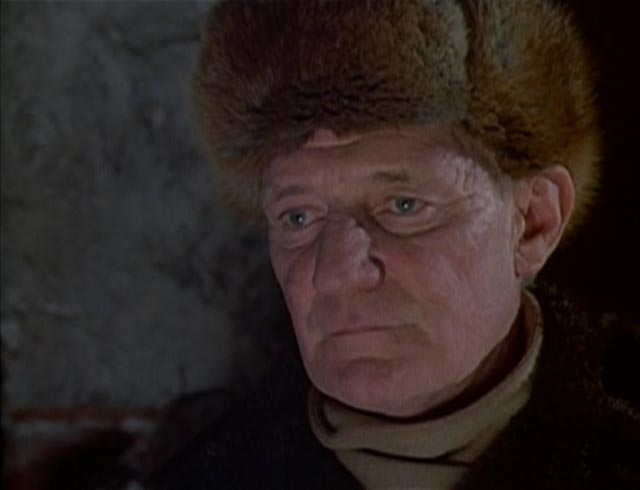
But once seen, its difficult to shake the image of the great and dignified Max von Sydow running long distances through real snow and ice in just his underwear (there’s a logical reason for this which is eventually revealed) and taking an axe to his perennial co-star Liv Ullmann. (Try picturing Steve McQueen or Christopher Lee, both initially approached for the part, in that snowy landscape and you gain even more respect for von Sydow for managing to retain his dignity and, against all odds, not look ridiculous.)
And then, of course, there’s the parrot …
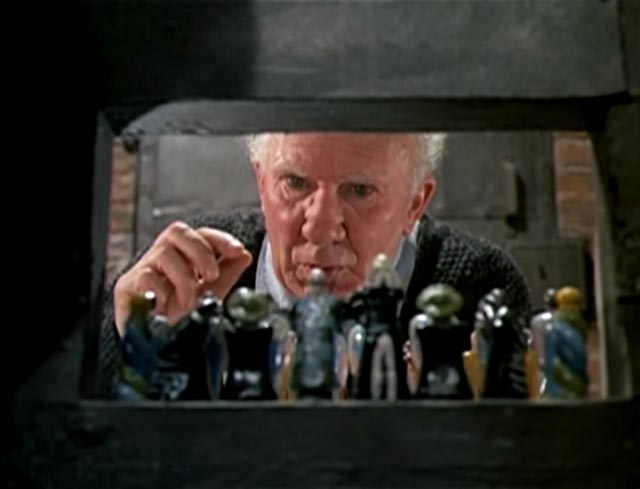
I actually saw this oddity during its original limited release back in the winter of 1971-’72 and recall enjoying it at the time. It may well have been the first movie I saw starring Max von Sydow and Liv Ullmann; but as I was unfamiliar with the work of Ingmar Bergman at the time, it probably wasn’t as jarring an experience for me then as it is now. And I certainly didn’t expect to see it turn up on Blu-ray, complete with commentary track.
This new release from VCI provides an opportunity for the film’s rediscovery, though I’m not sure who its intended audience is – or was back in 1971. The combination of Gothic and proto-slasher horror with that prestigious cast probably explains why it faded from sight and has largely been forgotten; the story would hardly appeal to the Bergman audience, while the brooding approach to the narrative doesn’t provide a lot in the way of visceral thrills for the horror crowd.
Which gets us back to the question of who made it and why, and what they were thinking.
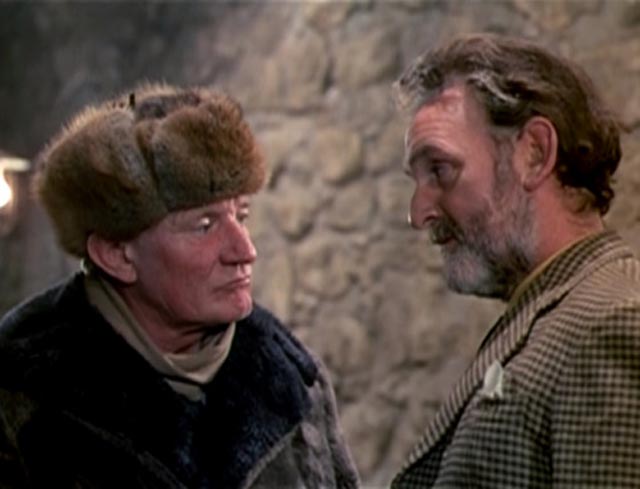
The script was written by Guy Elmes, most of whose work appears to be B-movies and English adaptations of Italian movies; it was based on a story by Sam Roecca, a prolific television writer who started out in Hollywood with westerns and war films. According to filmmaker and writer Bruce G. Hallenbeck in his commentary, it was originally intended as a vehicle for Steve McQueen, and was later offered to Christopher Lee. When various deals fell through, it was picked up by actor, producer and occasional director Mel Ferrer, whose previous production was the classic Terence Young thriller Wait Until Dark (1967). Ferrer put together a deal to get it made in Sweden and Denmark, shooting in English despite the Swedish stars (who seem to have dubbed their own voices, though lip-sync is at times imprecise).
Ferrer brought in as director Laslo Benedek, the Hungarian whose best-known work was the seminal biker film The Wild One (1953) starring Marlon Brando. Benedek does an efficient job of creating a sense of atmosphere, and the actors all give fully committed performances (von Sydow in particular in a physically demanding role), but it’s impossible not to keep asking yourself what they’re all doing in this thing, which plays like an episode of Brian Clemens’ 1970s TV series Thriller, an implausible, contrived narrative which builds to an ironic ending involving that pet parrot.
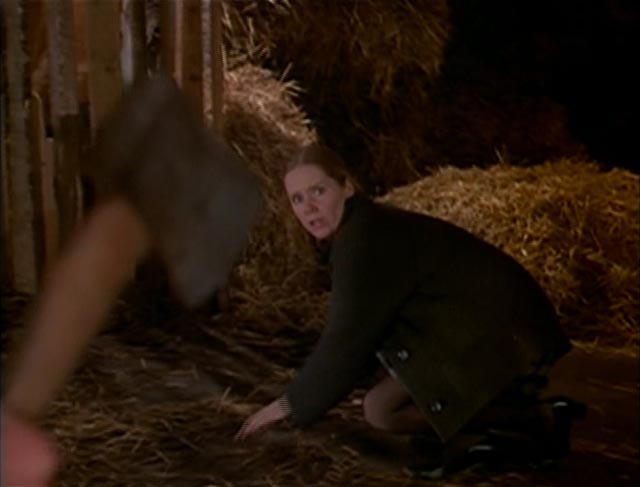
The image on VCI’s disk is disappointing, with radical shifts in contrast and colour stability from shot to shot, many scenes seemingly incorrectly timed so that they jump from day to night and back again with almost every edit. Henry Mancini’s score is sparse but effective. Sadly, Hallenbeck’s commentary starts well with a quick sketch of the production’s oddly convoluted background, but quickly settles into long stretches of silence interspersed with descriptions of what’s going on on screen, with occasional remarks about the actors and digressions into subjects which have no bearing on the film, and repeated assertions that this is a great unsung thriller rather than a genuine oddity whose existence points to the strange pathways producers sometimes took in cobbling together international financing in the years after the Hollywood studios went into sharp decline.
Comments